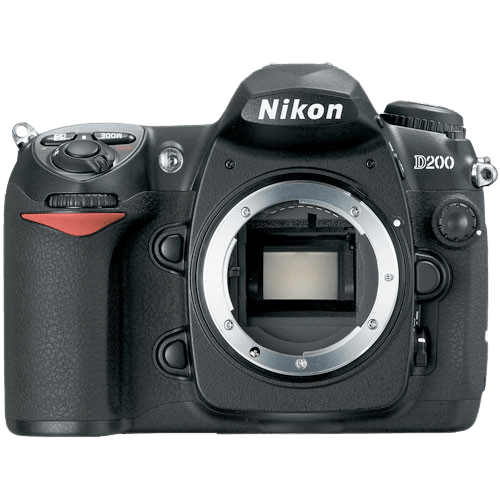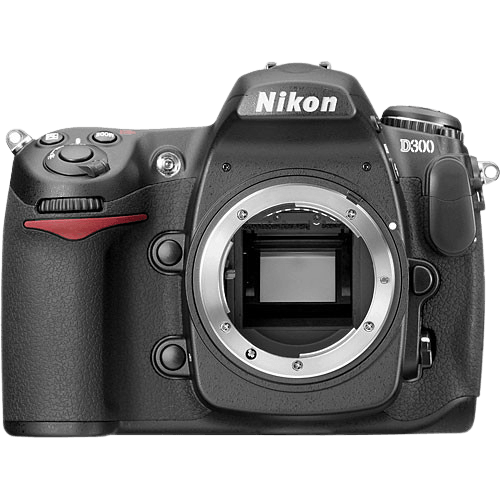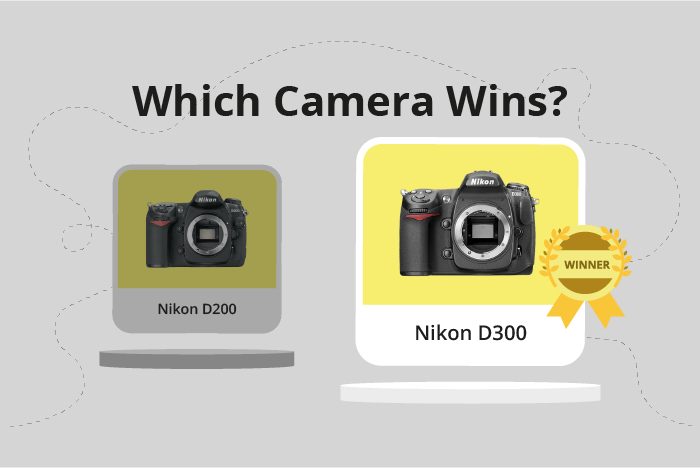Nikon D200 vs D300 Comparison
Nikon D200

Nikon D300

The Nikon D300 emerges as the winner with a score of 49/100, while the Nikon D200 scores 37/100. Both cameras are DSLR models, announced in 2005 and 2007 respectively. They share similar dimensions, with the D300 being slightly larger at 147 x 114 x 74mm compared to the D200’s 147 x 113 x 74mm. The D300 also weighs slightly more at 925g, while the D200 weighs 920g.
The D300 is better due to its higher score, which reflects its improved features and performance. Its launch price was $1540, showing that it’s a more premium option compared to the D200’s $1000 launch price.
On the other hand, the D200 has its advantages, such as being slightly lighter and more affordable. However, considering the overall scores and specifications, the Nikon D300 stands out as the superior choice between the two cameras.
Nikon D200 vs D300 Overview and Optics
The Nikon D300 outperforms the Nikon D200 in optics, scoring 47/100 compared to the D200’s 41/100. Both cameras share certain specifications, such as having an APS-C sensor size, a Nikon F DX lens mount, and no image stabilization. However, the D300 surpasses the D200 in specific aspects, making it the superior choice in terms of optics.
The Nikon D300 has a higher megapixel count of 12.3 compared to the D200’s 10 megapixels. This difference allows the D300 to capture more detail and produce higher resolution images. Additionally, the D300 has a faster shooting speed of 6 frames per second (fps), while the D200 shoots at 5 fps. This faster speed enables the D300 to capture fast-moving subjects more efficiently.
Another advantage of the Nikon D300 is its CMOS sensor, which offers better performance in low light conditions and improved noise reduction compared to the D200’s CCD sensor. The D300 also has a more advanced processor, the Expeed, which contributes to faster image processing and better overall image quality. The DXOMARK score for the D300’s sensor is 67, slightly higher than the D200’s score of 64, further proving the D300’s superior performance in image quality.
The Nikon D200 does not have any particular advantages over the D300 in terms of optics. The D300 outshines the D200 in all significant aspects, making it the clear winner in this comparison. Therefore, for those seeking a camera with better optics, the Nikon D300 is the recommended choice.
Nikon D200 vs D300 Video Performance
When comparing the Nikon D200 and Nikon D300, it is important to note that neither camera possesses video functionality. While some may view this as a drawback, others may not prioritize video capabilities in their chosen camera. Regardless, the lack of video functionality does not make one camera inherently better than the other. The overall quality and performance of these cameras are determined by other factors, such as general specifications and optics, rather than their video scores.
Nikon D200 vs D300 Features and Benefits
The Nikon D300 outperforms the Nikon D200 with a feature score of 54/100 compared to the D200’s 30/100. Despite this difference, both cameras share some common specifications. Neither camera has a touchscreen, flip screen, GPS, WIFI, or Bluetooth capabilities.
The D300 excels in screen size and resolution, boasting a 3-inch screen with a resolution of 922,000 dots. In contrast, the D200 has a smaller 2.5-inch screen and a lower resolution of 230,000 dots. This improvement in screen size and resolution allows D300 users to better review and compose their shots.
However, the D200 still has some advantages. It is a lighter camera, making it easier to carry and handle during long periods of use. Additionally, the D200 has a slightly lower price point, which may be appealing to photographers on a budget.
Considering these factors, the Nikon D300 is the clear winner in terms of features, with its larger and higher resolution screen providing a better user experience. The D200, while not as feature-rich, remains a viable option for those seeking a lighter and more affordable camera.
Nikon D200 vs D300 Storage and Battery
The Nikon D300 outperforms the Nikon D200 in storage and battery with a score of 43/100 versus 35/100. Both cameras share certain specifications, such as having a single memory card slot and accepting Compact Flash (Type I or II) memory cards. Additionally, neither camera offers USB charging capabilities.
The D300 surpasses the D200 with its longer battery life, providing 1000 shots compared to the D200’s 800 shots. This advantage allows photographers to capture more images without needing to replace or recharge the battery as frequently. However, it is important to note that both cameras use the same battery type, the EN-EL3e.
Although the D200 falls short in battery life, it does not possess any notable advantages over the D300 in the storage and battery category. Given these findings, it is clear that the Nikon D300 provides a better storage and battery experience for photographers when compared to the Nikon D200.
Nikon D200 vs D300 – Our Verdict
Are you still undecided about which camera is right for you? Have a look at these popular comparisons that feature the Nikon D200 or the Nikon D300:

